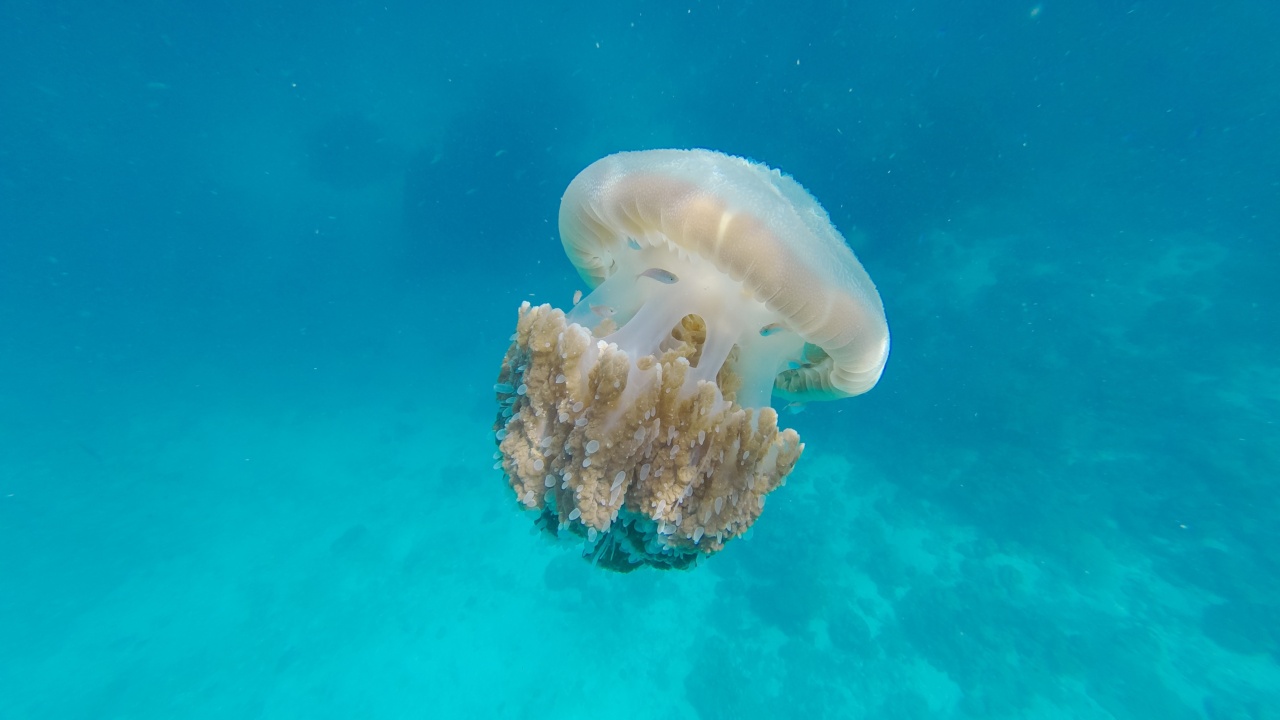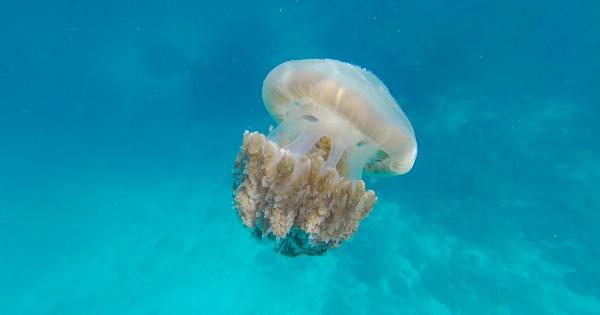Jellyfish stings are an unfortunate and sometimes painful part of spending time in the ocean. These creatures can deliver a stinging sensation that ranges from mildly irritating to excruciatingly painful.
While prevention is always the best course of action, accidents can still happen. Knowing how to provide quick relief for a jellyfish sting can help alleviate the discomfort and prevent further complications. In this article, we will explore some effective remedies to provide immediate relief from a jellyfish sting.
1. Remove Yourself from the Water
As soon as you or someone around you is stung by a jellyfish, the first step is to get out of the water immediately. Staying in the vicinity of the jellyfish increases the risk of getting stung again or coming into contact with other jellyfish.
Move to a safe location on the shore or on a boat, away from any potential threats.
2. Rinse the Affected Area with Seawater
Once you are out of the water, rinse the affected area with seawater. Do not use freshwater, as it can worsen the pain and increase the release of toxins from the jellyfish’s tentacles.
The salt content in seawater helps to neutralize the venom and flushes out any remaining tentacles on the skin.
3. Carefully Remove Tentacles
Using tweezers, a credit card, or the edge of a shell, gently scrape off any remaining tentacles from the skin. It’s important to avoid using your bare hands, as this can lead to further stinging.
Be cautious not to rub or apply pressure, as it can cause the release of more venom.
4. Soak in Hot Water
One of the most effective remedies for relieving the pain caused by a jellyfish sting is soaking the affected area in hot water. The hot water helps to break down the venom and alleviate the discomfort.
It’s suggested to use water at a temperature of 40-45°C (104-113°F) and soak for at least 20 minutes.
5. Apply Vinegar
Vinegar has long been recognized as a useful remedy for jellyfish stings. It helps neutralize the venom, preventing it from spreading further into the skin. Gently pour vinegar over the affected area or soak a cloth in vinegar and apply it to the sting.
Leave it on for a few minutes before rinsing with seawater.
6. Use a Commercial Sting Spray or Gel
There are various over-the-counter sting sprays and gels available that are specifically formulated to provide relief from jellyfish stings. These products often contain ingredients like lidocaine or menthol, which have soothing and numbing properties.
Follow the instructions on the packaging for the best results.
7. Apply a Cold Pack
If hot water is not available, you can apply a cold pack or ice wrapped in a thin cloth to the affected area. The cold helps to reduce swelling and numb the pain temporarily.
However, this method should only be used if hot water is not accessible, as heat is generally more effective for jellyfish stings.
8. Take Over-the-Counter Pain Relievers
If the pain from the jellyfish sting persists or becomes unbearable, you can consider taking over-the-counter pain relievers like ibuprofen or acetaminophen.
These medications help reduce pain and inflammation, providing some relief until the sting heals completely.
9. Seek Medical Attention
In some cases, jellyfish stings can cause severe allergic reactions or complications. If you experience symptoms such as difficulty breathing, chest pain, or anaphylaxis, it is crucial to seek immediate medical attention.
A healthcare professional will be able to provide the necessary treatment.
10. Prevention is Key
While dealing with a jellyfish sting is unpleasant, preventing them in the first place is always the best approach. Here are a few tips to minimize the risk of getting stung:.
– Check local beach advisories for jellyfish warnings before entering the water.
– Avoid swimming in areas where jellyfish are commonly sighted.
– Wear protective clothing, such as a wetsuit or rash guard, to reduce skin exposure.
– Swim with caution and keep an eye out for jellyfish in the water.
– If you spot a jellyfish, give it a wide berth and do not attempt to touch or handle it.
– Stay informed about first aid procedures for jellyfish stings to ensure immediate action if stung.
Conclusion
Jellyfish stings can be a painful and distressing experience, but with the right knowledge, quick relief is possible.
Remember to remove yourself from the water, rinse the affected area with seawater, carefully remove any tentacles, soak in hot water, and consider using vinegar or a commercial sting spray. Applying cold packs, taking pain relievers, and seeking medical attention if necessary are also important steps.
By following these remedies and prioritizing prevention, you can minimize the discomfort caused by jellyfish stings and continue to enjoy your time in the ocean.






























